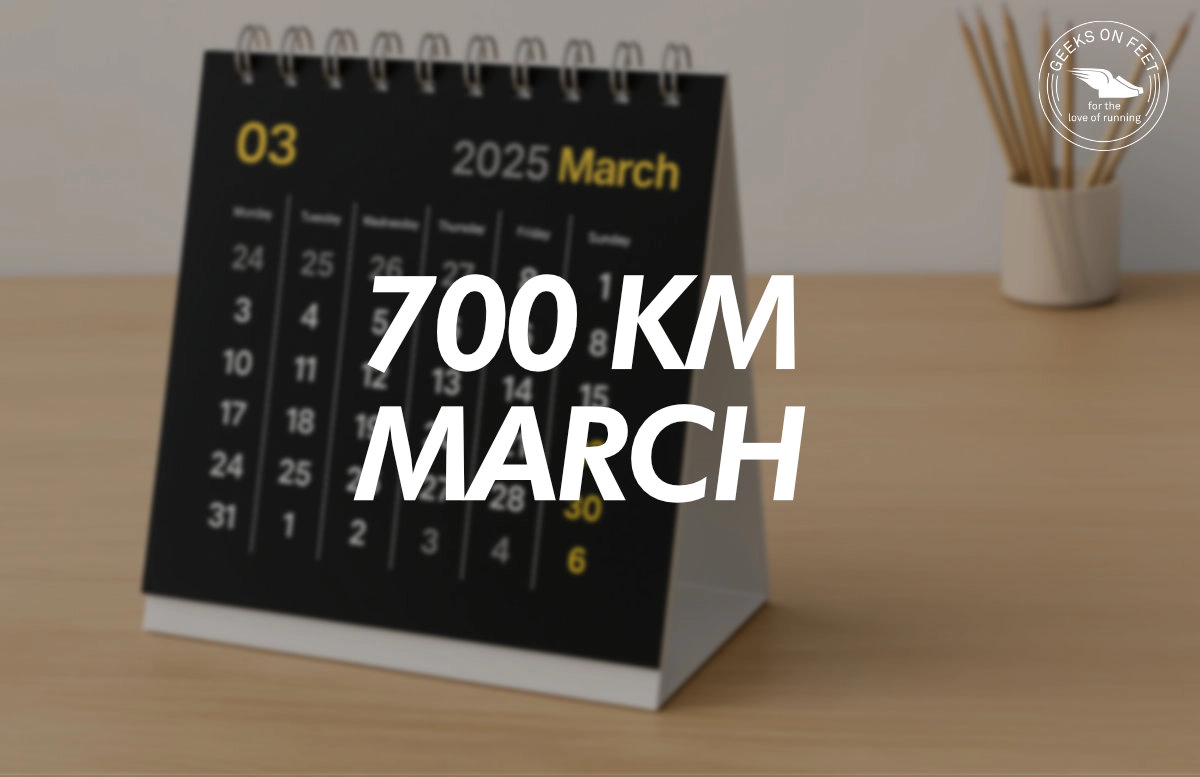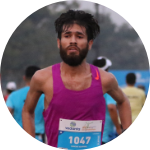
March was a milestone month for me - a total of 700 KM ran, many hours spent outdoors, and a deeper dive into endurance training. For context, my usual monthly mileage lies between 300-400 KM, my previous best monthly total was 500 KM, and my marathon and half-marathon PBs of 3:06 and 1:20, respectively.
Monthly mileage totals over the last year
This endeavour was not just about hitting big numbers, it was about being consistent with my running schedule, experimenting and learning what works (and what does not) while pushing limits. Here is what I learnt.
After a failed marathon attempt in February (3:06 finish as opposed to the planned 2:50), I set out to build substantial mileage in March. A few factors aligned on the personal front, giving me the flexibility to run at any time of the day. With this advantage, I began the month to run at least a half-marathon distance daily, adding up to approximately 148 KM per week. Since this was just shy of the elusive 150 KM mark, I adjusted my weekly mileage to around 154 KM (22 KM per day).
As the days passed by, I faced some minor challenges such as sore ankles and glutes, but I was on track to hit 660 KM for the month. By day 15, I expected fatigue to set in, but instead, I realized I could push my mileage further. By slightly reducing my pace, I increased my weekly total to 161 KM, which led to my first-ever 100-mile week, and in the end, I could hit the milestone of 700 KM a month.
Weekly mileage breakdown
Not every day was the same, and the key was balancing volume and intensity with recovery. The following helped me manage aches and pains and maintain mileage -
I realised high mileage isn’t just physical; a certain level of mental preparedness is also needed to make things happen. I experimented with the following techniques to keep me going -
After gels failed me during my last marathon, I made it a point not to eat or drink during the runs this month. It is something I won’t recommend for everyone, but I thought it was a great way to build tolerance. Apart from the fueling during the run, the changes I made to my nutrition were eating more carbohydrates and increasing my intake of good fats (avocado, peanut butter). I also increased my sleep duration from ~7 hours to ~8-9 hours. My daily water intake also increased to about 4 liters pretty much on its own.
Editor’s Note "Don’t Try This at Home… Without the base and a Plan"
700 KM in a month is the impressive, and is higher end of endurance. But, before you lace up your shoes and decide to become a mileage monster, let’s take a deep breath and talk.
Running huge mileage without proper buildup is a bit like trying to binge-watch an entire season of a show in one night and then wondering why you feel like a zombie the next day — only with shin splints and knee pain.
Injuries, burnout, and a sudden hatred for once-beloved running are real consequences of overdoing it. Sanchit had prior base mileage, and listened to his body. So this is not for everybody, and proceed with caution. Maybe rest of us can just admire the 700 KM from a safe distance.
Train smart. Recover hard.

Sanchit is a software engineer who started running as a hobby and got addicted. If he’s not running, he’s probably thinking about his next run or surfing Strava. He can be reached out on Twitter @sanchit3008 or on Strava at this URL.